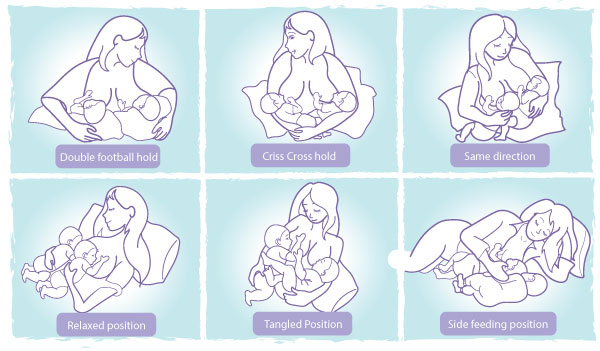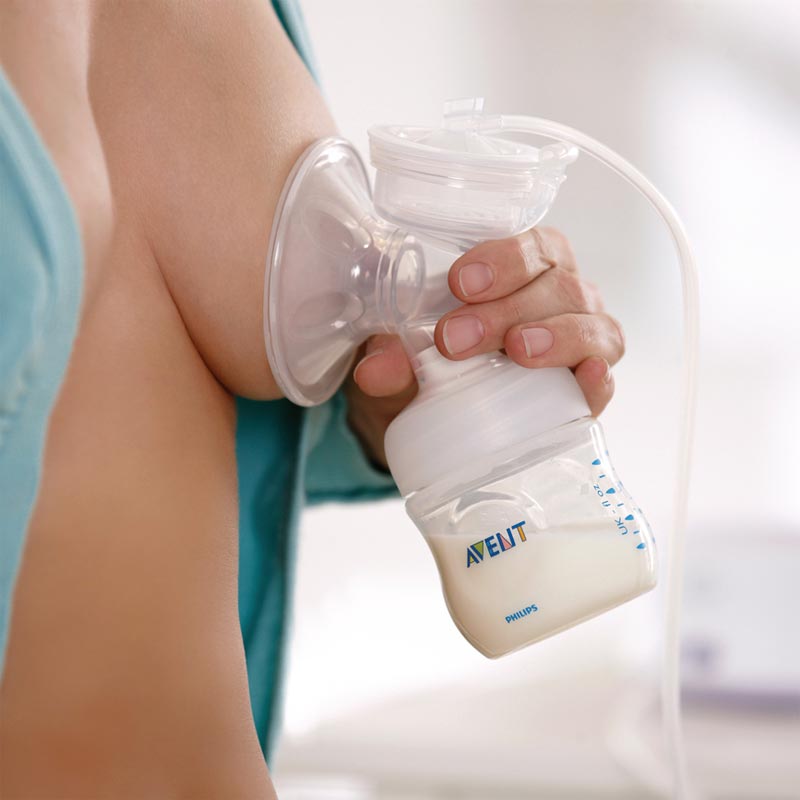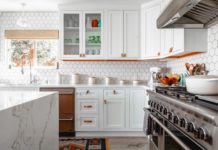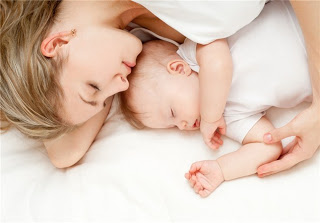Breastfeeding is challenging, and breastfeeding twins even more so. But it’s worth persisting with it, and here are some tips and recommendations to make it easier.
Positions

If you’re breastfeeding two babies at once, you need to have one on each breast with their bodies extending back around your sides. This is sometimes called a footballer position, as if each baby were a football tucked under your arm. It’s not necessarily the easiest position to feed in, though, so in the very early days, when your babies are learning to latch on, you might need to feed them one at a time while you experiment with other positions, such as with the baby lying across the front of your body, or with you and the baby lying down in bed facing one another.
Good Support

Pillows are very useful for helping with the position for feeding both babies at once. There’s a specialist twin-feeding pillow called the Twin Z pillow, which is shaped like a number 3. You put it behind you, with the center arm folded up as an extra back support, and the outer arms go around your waist, providing a nice wide pillow area to support each baby by your sides. You can also use it as a support pillow for both babies to lie on, on the floor, with the curved bits supporting each of their heads. Another excellent pillow is My Brest Friend, which comes in singleton and twin versions. This one straps completely around your waist, which means it stays on well if you shift position or even get up, and provides good strong back support.
Snacks and water
Breastfeeding uses a lot of energy, and you’re doing it twice as much. On the plus side, you’re expending so many calories that you’ll hopefully get back to your pre-baby weight without even getting up off the couch. But on the minus side, you’re likely to feel hungry, dehydrated, and tired – and of course you’ll be awake a lot of the night as well. Twins can have an uncanny ability to tag-team, taking it in turns to be awake and keep you awake, so that they each get some sleep but you don’t.
Set up a table within easy reach of your favorite breastfeeding chair (and anywhere else you typically nurse), and keep it well stocked with water and snacks, so you can eat and drink while you nurse. For the water, use a bottle with a flip lid that you can open with one hand, or even one with a sports cap that you can open with your teeth, but you don’t want to be stuck fumbling with a screw-top when one arm is trapped under a sleeping baby. You could just use an open-topped drinking glass, but if it’s within reach of your hand, it’s within reach of a baby’s kicking legs and they might knock it over. For the snacks, healthy is important, but convenient and energy-boosting are even more important. You don’t need to be as strict with your diet as when you were pregnant. Granola bars are good, but candy bars are fine too, and won’t drop oats in your babies’ hair. And this is probably the only time in your life when you can eat chocolate around the clock and not gain weight. Another good snack option is squeezy pouches of yogurt or smoothie – convenient and non-messy, a good source of fruit, and you’ll probably want to buy some in a few months’ time anyway for the babies to eat.
Sore nipples and how to cope with them
Breastfeeding is hard on your nipples, and twice as hard if you’re feeding twins. Your nipples can become sore and cracked, and also bruised, sometimes getting semi-permanently molded into a pointed shape like a lipstick from the pressure of surprisingly hard little gums.
There are various creams you can use to soothe sore nipples. The most effective is Lansinoh, which is pure lanolin. It’s thick and translucent, a bit like petroleum jelly. If you live in a cold climate, it’s so solid that it can be hard to squeeze it out of the tube, and once you get it out you need to rub it between your fingers a bit to soften it up before applying it. It’s a fantastic product which can really make the difference between persisting with breastfeeding and giving up.
Nipple shields are another item some mothers find useful if breastfeeding is painful. They have little holes in, like a bottle teat, and you wear them during the feed, so that if your babies are inclined to gnaw, or suck too hard, they’re doing it on the plastic instead of straight onto your sore flesh. But not all babies will suck from them willingly, especially if they don’t like bottle teats.
Clothes for you
Having a good nursing bra is important, but even more so with twins! You need to be able to get it open quickly, perhaps with only one hand if you’re already feeding the other twin, or under time pressure if one twin is hungry and threatening to wake the other sleeping twin by crying.
You can get bras where either or both cups can be unclipped at the top and pulled down, like these, or ones with small openings in each cup for the nipples, like this one, which opens and closes using Velcro.
You probably want some nursing tops as well – if you’re feeding at home you can just lift your whole shirt up, but that doesn’t work so well at the grocery store or the playground, and you don’t want to be confined to the house with two babies. As a mother of twins, make sure you get a nursing top where both sides can be accessed at once, rather than one where opening one side pulls the fabric too tight to open the other side! Try this style, where the fabric is pushed aside and gathered in the middle, or this one, where there’s an outer layer like a cardigan which can be pushed out to the sides.
You’ll also need some nursing pads to protect your clothes, as your breasts will leak milk in between feeds.
If you’re self-conscious about breastfeeding in front of people, or belong to a conservative culture – or even if you just find that feeding two babies makes you that much more exposed than feeding one – you might feel more comfortable with a nursing cover. You strap it around your neck and it contains boning, like a hoop skirt, which means it has its own structure, and encloses your babies like a little tent, rather than just hanging straight down and covering them like a blanket. This also means they can focus on the feed rather than being distracted by their surroundings, which becomes more of an issue as they get older.
Bibs
All babies spit up milk, whether they’re breastfed or bottle-fed. Keep absorbent burp cloths on hand everywhere in the house where you feed your babies or sit with them for any length of time, like the couch or your bed, as well as near their crib. It’s also a good idea to put bibs on them – not the heavy-duty plastic kind they’ll move on to when they start eating solid food, but soft cloth ones to catch spit-up milk and drool. There will probably be more of it than you expect, and it saves you changing their onesies every hour or so (instead you’ll only have to do it when their diapers leak). There are some quite stylish bandana bibs available these days. If you have identical twins, you could even buy sets of bibs in two different colors, one for each baby, so family and friends can tell them apart!
Pumping

You might need a breast pump to make sure your milk supply keeps up with the challenge of catering for two. There are various options available, from a simple hand-operated pump to a fancy electric one which does both breasts at once and has an LCD screen with a readout showing how much milk you’ve expressed.
This is even more important if either or both of the babies have any complications that need an extended stay in the hospital (which is more likely with twins, as they have a higher chance of being small or premature). If they’re being bottle-fed or tube-fed in the hospital, and you plan to breastfeed them when they come home, you need to express milk regularly so that your supply doesn’t dwindle. And if you freeze the milk, then it’s not wasted – you can feed it to them when they come home. Breast milk bags are useful for storing and freezing the milk.
If you are feeding them expressed milk, you’ll need most of the paraphernalia you might have hoped to avoid by breastfeeding: bottles (look for ones that are compatible with your pump, so you can pump directly into them), a bottle brush, and a sterilizer (you can get a standalone appliance or one you heat in the microwave). But at least you won’t have to bother with all that for every feed.










